‘Charleston’ Category
» posted on Saturday, March 30th, 2013 by Linda Lou Burton
One Two Three
 Linda Burton posting from Charleston, West Virginia – Imagine building a house with 333 rooms. When you stand in front of the West Virginia State Capitol, you have to think about that. How did Cass Gilbert do it, back in the early 30’s? More’s the question, how did he manage to finish the monumental project on time, and under budget? It seems he used a simple principle – he broke a huge task into smaller parts; as easy as one, two, three. Cass Gilbert (1859-1934) had a well-established reputation when he was selected to design a capitol for West Virginia. Born in Ohio and educated at MIT, he lived in Minneapolis for many years; he designed a number of buildings there and was commissioned to design the Minnesota State Capitol in 1895. That wow-factored his name so much he moved his operations to New York, where he became a celebrity architect. He designed the Woolworth Building there; it was the world’s tallest building when it
Linda Burton posting from Charleston, West Virginia – Imagine building a house with 333 rooms. When you stand in front of the West Virginia State Capitol, you have to think about that. How did Cass Gilbert do it, back in the early 30’s? More’s the question, how did he manage to finish the monumental project on time, and under budget? It seems he used a simple principle – he broke a huge task into smaller parts; as easy as one, two, three. Cass Gilbert (1859-1934) had a well-established reputation when he was selected to design a capitol for West Virginia. Born in Ohio and educated at MIT, he lived in Minneapolis for many years; he designed a number of buildings there and was commissioned to design the Minnesota State Capitol in 1895. That wow-factored his name so much he moved his operations to New York, where he became a celebrity architect. He designed the Woolworth Building there; it was the world’s tallest building when it 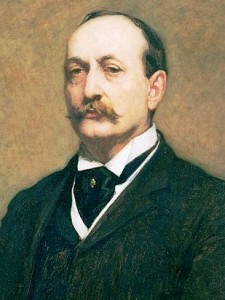 was built in 1913; his technique for cladding a steel frame became the model for decades. He designed campus buildings in Texas and train stations in Connecticut and the US Supreme Court Building in Washington, DC. West Virginia was in crisis need for a new capitol when the Capitol Building Commission selected Cass Gilbert on July 23, 1921. The West Virginia capitol had mysteriously caught fire and burned beyond use on January 3 of that year; government operations were moved to a temporary building dubbed “the pasteboard capitol.” Cass Gilbert and the Commission began to search for a suitable site for the permanent construction. By the end of December the location was settled and Gilbert began the master plan. » read more
was built in 1913; his technique for cladding a steel frame became the model for decades. He designed campus buildings in Texas and train stations in Connecticut and the US Supreme Court Building in Washington, DC. West Virginia was in crisis need for a new capitol when the Capitol Building Commission selected Cass Gilbert on July 23, 1921. The West Virginia capitol had mysteriously caught fire and burned beyond use on January 3 of that year; government operations were moved to a temporary building dubbed “the pasteboard capitol.” Cass Gilbert and the Commission began to search for a suitable site for the permanent construction. By the end of December the location was settled and Gilbert began the master plan. » read more
» posted on Friday, March 29th, 2013 by Linda Lou Burton
Story Wisps
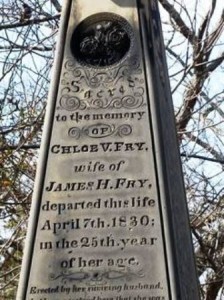 Linda Burton posting from Charleston, West Virginia – A good story wisp makes you want to know more. Cemeteries are filled with story wisps; a row of children that died within days of each other – was it a terrible fever that struck? Or an accident? How did a mother manage her grief after such a loss? As I drove through the historic Old Circle section of Spring Hill Cemetery, high on a hill overlooking Charleston, I wondered about the death of Chloe V Fry, buried in her 25th year. Her marker, a beautiful obelisk with handcarved roses at the top, dates to 1830, when her husband James had it erected with these words “that he may record here that she was an affectionate and devoted wife, a kind and charitable neighbor, a watchful and tender mother, a dutiful daughter and a Christian, sincere, resigned, and patient, with the hope that her children may come to it as to the shrine of virtue and resolve ‘to go and do likewise.’” Did those children regularly visit their mother’s grave? Did this symbol of honor and respect color the lives they went on to live? A story wisp. I’d stopped at the cemetery office first to get some history of Spring Hill
Linda Burton posting from Charleston, West Virginia – A good story wisp makes you want to know more. Cemeteries are filled with story wisps; a row of children that died within days of each other – was it a terrible fever that struck? Or an accident? How did a mother manage her grief after such a loss? As I drove through the historic Old Circle section of Spring Hill Cemetery, high on a hill overlooking Charleston, I wondered about the death of Chloe V Fry, buried in her 25th year. Her marker, a beautiful obelisk with handcarved roses at the top, dates to 1830, when her husband James had it erected with these words “that he may record here that she was an affectionate and devoted wife, a kind and charitable neighbor, a watchful and tender mother, a dutiful daughter and a Christian, sincere, resigned, and patient, with the hope that her children may come to it as to the shrine of virtue and resolve ‘to go and do likewise.’” Did those children regularly visit their mother’s grave? Did this symbol of honor and respect color the lives they went on to live? A story wisp. I’d stopped at the cemetery office first to get some history of Spring Hill 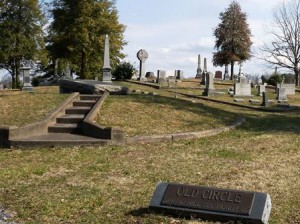 Cemetery; Glenna gave me a map outlining the sections that spread over 150 acres of hills and valleys; 40,000 graves they have recorded, but there are more. It’s listed on the National Register as a Historic Place; the earliest graves go back to 1818; it has been owned by the City of Charleston since 1869. The cemetery tells the history of Charleston, in wisps. Glenna showed me notebooks she is assembling to expand the stories; like me, she is intrigued to know more. I share a few with you. » read more
Cemetery; Glenna gave me a map outlining the sections that spread over 150 acres of hills and valleys; 40,000 graves they have recorded, but there are more. It’s listed on the National Register as a Historic Place; the earliest graves go back to 1818; it has been owned by the City of Charleston since 1869. The cemetery tells the history of Charleston, in wisps. Glenna showed me notebooks she is assembling to expand the stories; like me, she is intrigued to know more. I share a few with you. » read more
» posted on Thursday, March 28th, 2013 by Linda Lou Burton
Easy In, Easy Out
 Linda Burton posting from Charleston, West Virginia – Remember the story I told you last July about the three ways to get to Juneau? The joke was “by boat, by plane, or by birth canal.” I’m reminded of Juneau as I gaze at hilltops from my window in Charleston; no wide-stretched valleys here; the hills are close, with houses perched on top and stair-stepped down the sides. Driveways are steep, unless you live riverside; roads are curved to follow the cut of the river, or the contour of the hills. So how many ways are there to get to Charleston, I asked myself, thinking of the freeway signs that give the choice of I-64, I-77, and I-79. I’ve seen a sign to Yeager Airport, another to the Amtrak station. I’ve heard freight trains, faintly, in the night, and seen barges loaded with coal floating down the river. My GPS has monotoned instructions directing me over three of the five bridges I believe are here; I’m not quite sure. It’s time to go exploring, I decided, and asked the bossy GPS to lead me to that airport. I’m curious to see – an airport on top of a mountain, how can that be?
Linda Burton posting from Charleston, West Virginia – Remember the story I told you last July about the three ways to get to Juneau? The joke was “by boat, by plane, or by birth canal.” I’m reminded of Juneau as I gaze at hilltops from my window in Charleston; no wide-stretched valleys here; the hills are close, with houses perched on top and stair-stepped down the sides. Driveways are steep, unless you live riverside; roads are curved to follow the cut of the river, or the contour of the hills. So how many ways are there to get to Charleston, I asked myself, thinking of the freeway signs that give the choice of I-64, I-77, and I-79. I’ve seen a sign to Yeager Airport, another to the Amtrak station. I’ve heard freight trains, faintly, in the night, and seen barges loaded with coal floating down the river. My GPS has monotoned instructions directing me over three of the five bridges I believe are here; I’m not quite sure. It’s time to go exploring, I decided, and asked the bossy GPS to lead me to that airport. I’m curious to see – an airport on top of a mountain, how can that be? 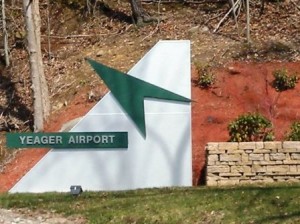 And why is it named “Yeager”? Is that Chuck Yeager, and was he born here? I drove down MacCorkle Avenue, crossed the 36th Street Bridge, ramped onto an I-64/77 combo, risked my life to move three lanes right so I could Exit 99; turned right to Highway 114 and up the hill. A sign warned “Yield Ahead;” cut left (but yield, of course) for an ever steepening climb; I made it to the Quick Stop parking lot and pulled into a slot. By the end of the day, I’d have my answers, for sure. » read more
And why is it named “Yeager”? Is that Chuck Yeager, and was he born here? I drove down MacCorkle Avenue, crossed the 36th Street Bridge, ramped onto an I-64/77 combo, risked my life to move three lanes right so I could Exit 99; turned right to Highway 114 and up the hill. A sign warned “Yield Ahead;” cut left (but yield, of course) for an ever steepening climb; I made it to the Quick Stop parking lot and pulled into a slot. By the end of the day, I’d have my answers, for sure. » read more
» posted on Wednesday, March 27th, 2013 by Linda Lou Burton
Everything Old Is New
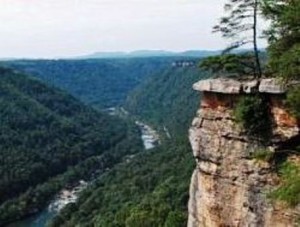 Linda Burton posting from Charleston, West Virginia – “Our blueberry buttermilk pie is the absolute best,” Jeff said, giving me a nudge towards dessert; I had already polished off my grilled asparagus-bleu cheese sandwich. I settled on a piece “to go,” stating I had a busy afternoon ahead; that’s when the conversation segued into things to do in Charleston, and then, somehow, the New River Gorge. Today Jeff was my server in East End’s Bluegrass Kitchen; on other days, in season, he is a whitewater raft guide with New & Gauley River Adventures. I asked for a card, and I asked Jeff to tell me more about the Gorge. “The New River is misnamed,” Jeff said. “It’s actually the oldest river in the world, or at least the second oldest.” “Just how do you know that?” I asked, with a hint of disbelief in my voice. “Geologists,” he answered. “That’s what they say. It has to do with continental drift and lift and the way the earth has evolved.” Well I can look that up, I thought, and went on to inquire more about the New
Linda Burton posting from Charleston, West Virginia – “Our blueberry buttermilk pie is the absolute best,” Jeff said, giving me a nudge towards dessert; I had already polished off my grilled asparagus-bleu cheese sandwich. I settled on a piece “to go,” stating I had a busy afternoon ahead; that’s when the conversation segued into things to do in Charleston, and then, somehow, the New River Gorge. Today Jeff was my server in East End’s Bluegrass Kitchen; on other days, in season, he is a whitewater raft guide with New & Gauley River Adventures. I asked for a card, and I asked Jeff to tell me more about the Gorge. “The New River is misnamed,” Jeff said. “It’s actually the oldest river in the world, or at least the second oldest.” “Just how do you know that?” I asked, with a hint of disbelief in my voice. “Geologists,” he answered. “That’s what they say. It has to do with continental drift and lift and the way the earth has evolved.” Well I can look that up, I thought, and went on to inquire more about the New 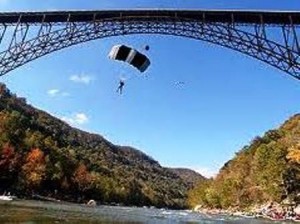 River, and the Gorge. “It has the longest bridge in the world,” Jeff said. Oldest? Longest? I thanked Jeff for the info, and headed out for my afternoon rounds. Tonight, as I ate my blueberry buttermilk pie (absolute best) I spent some time with the World Almanac and confirmed Jeff’s other statements. Fact: the New River Gorge Bridge is the longest single-span steel arch bridge in the western hemisphere. It is 3,030 feet long, 876 feet high, took three years to build, and cost nearly $37 million. And one day a year, people are allowed to jump off it. » read more
River, and the Gorge. “It has the longest bridge in the world,” Jeff said. Oldest? Longest? I thanked Jeff for the info, and headed out for my afternoon rounds. Tonight, as I ate my blueberry buttermilk pie (absolute best) I spent some time with the World Almanac and confirmed Jeff’s other statements. Fact: the New River Gorge Bridge is the longest single-span steel arch bridge in the western hemisphere. It is 3,030 feet long, 876 feet high, took three years to build, and cost nearly $37 million. And one day a year, people are allowed to jump off it. » read more
» posted on Tuesday, March 26th, 2013 by Linda Lou Burton
The Citizen Key
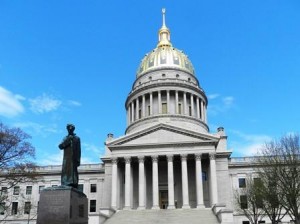 Linda Burton posting from Charleston, West Virginia – On the front steps of the West Virginia state capitol is a statue of Abraham Lincoln. It’s a nine-foot bronze, designed by Fred Martin Torrey and installed in 1974. The inscription reads: Abraham Lincoln created the state of West Virginia by proclamation and signature. West Virginia joined the Union June 20, 1863. A woman wearing a bright orange jacket and bright orange shoes walked up just as I was snapping pictures; she had her camera out too. I offered to take her picture beside the Lincoln statue; she declined. “It’s impressive as it is,” she said, shaking her head. “I’ll remember I was here.” Faye and I exchanged names; she said she was from Bristol, right on the Virginia-Tennessee line. “I’m wearing my Tennessee orange, did you catch that?” she laughed, pointing to her shoes.
Linda Burton posting from Charleston, West Virginia – On the front steps of the West Virginia state capitol is a statue of Abraham Lincoln. It’s a nine-foot bronze, designed by Fred Martin Torrey and installed in 1974. The inscription reads: Abraham Lincoln created the state of West Virginia by proclamation and signature. West Virginia joined the Union June 20, 1863. A woman wearing a bright orange jacket and bright orange shoes walked up just as I was snapping pictures; she had her camera out too. I offered to take her picture beside the Lincoln statue; she declined. “It’s impressive as it is,” she said, shaking her head. “I’ll remember I was here.” Faye and I exchanged names; she said she was from Bristol, right on the Virginia-Tennessee line. “I’m wearing my Tennessee orange, did you catch that?” she laughed, pointing to her shoes. 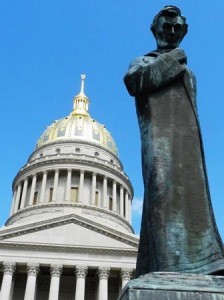 We chatted about the building in front of us, and the statue. “He looks so sad,” she said. “Do you think he’s upset about making West Virginia a state, or just the war?” I had to admit I didn’t know; in fact, I was unclear on the sequence of events that led to West Virginia’s statehood, although I knew the split from Virginia happened during the Civil War. We walked around the statue, studying it more carefully. On the side of the pedestal were the words Abraham Walks At Midnight from a poem by Vachel Lindsay. Faye and I agreed we needed to beef up our knowledge of West Virginia history. Which I did. And the answer to Faye’s question was “No.” His pose is related to the Lindsay poem written in 1914. Statehood, well that’s another story. » read more
We chatted about the building in front of us, and the statue. “He looks so sad,” she said. “Do you think he’s upset about making West Virginia a state, or just the war?” I had to admit I didn’t know; in fact, I was unclear on the sequence of events that led to West Virginia’s statehood, although I knew the split from Virginia happened during the Civil War. We walked around the statue, studying it more carefully. On the side of the pedestal were the words Abraham Walks At Midnight from a poem by Vachel Lindsay. Faye and I agreed we needed to beef up our knowledge of West Virginia history. Which I did. And the answer to Faye’s question was “No.” His pose is related to the Lindsay poem written in 1914. Statehood, well that’s another story. » read more
» posted on Monday, March 25th, 2013 by Linda Lou Burton
Getting To The Bottom
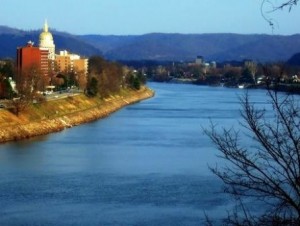 Linda Burton posting from Charleston, West Virginia – History or habit? How do you correctly say “Kanawha,” the name of the river that runs through Charleston? The surest sign somebody doesn’t know much about your town is when they mispronounce a local landmark. I didn’t want to be rude; I called the Visitors Bureau and asked. “How do you pronounce the name of your river?” (Ka-NA-wah? KAN-a-wah?) “However you want,” was the reply. “I call it Ka-NAW but other people say different.” Intense discussion followed, including a poll of the staff. Ka-NAW? What happened to the “H”? Why two syllables instead of three? What is the origin of the name? The staff unanimously agreed on “Ka-NAW” as the preferred term, and told me it was originally an Indian name – Ka-na-wa-ha. Or something like that. One thing was settled for me; I’m going to call it Ka-NAW, as is the habit of current residents. Next I wanted to get to the bottom of the history of the name. I talked to the reference desk at the downtown library; I consulted the West Virginia Encyclopedia online; I read Wikipedia. Wikipedia had this to say, with a list of impressive references: Ka(ih)nawha” derives from the region’s Iroquoian dialects meaning “water way” or “canoe way” implying the metaphor “transport
Linda Burton posting from Charleston, West Virginia – History or habit? How do you correctly say “Kanawha,” the name of the river that runs through Charleston? The surest sign somebody doesn’t know much about your town is when they mispronounce a local landmark. I didn’t want to be rude; I called the Visitors Bureau and asked. “How do you pronounce the name of your river?” (Ka-NA-wah? KAN-a-wah?) “However you want,” was the reply. “I call it Ka-NAW but other people say different.” Intense discussion followed, including a poll of the staff. Ka-NAW? What happened to the “H”? Why two syllables instead of three? What is the origin of the name? The staff unanimously agreed on “Ka-NAW” as the preferred term, and told me it was originally an Indian name – Ka-na-wa-ha. Or something like that. One thing was settled for me; I’m going to call it Ka-NAW, as is the habit of current residents. Next I wanted to get to the bottom of the history of the name. I talked to the reference desk at the downtown library; I consulted the West Virginia Encyclopedia online; I read Wikipedia. Wikipedia had this to say, with a list of impressive references: Ka(ih)nawha” derives from the region’s Iroquoian dialects meaning “water way” or “canoe way” implying the metaphor “transport 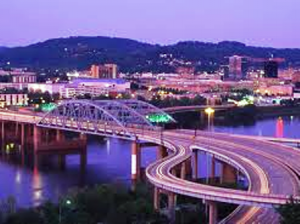 way,” in the local language. The Glottal consonant of the “ih” dropped out as few European settlers and homesteaders were fluent with any of the dialects of Iroquois. Bill Wintz, a descendant of Kanawha Valley pioneers and the West Virginia Historical Society’s 1994 Historian of the Year, wrote in the West Virginia Encyclopedia that “the river was variously called the Conoy, Conoise, Cohnawa, and finally the Kanawha.” TMI; I decided to turn my attention instead to basic facts. » read more
way,” in the local language. The Glottal consonant of the “ih” dropped out as few European settlers and homesteaders were fluent with any of the dialects of Iroquois. Bill Wintz, a descendant of Kanawha Valley pioneers and the West Virginia Historical Society’s 1994 Historian of the Year, wrote in the West Virginia Encyclopedia that “the river was variously called the Conoy, Conoise, Cohnawa, and finally the Kanawha.” TMI; I decided to turn my attention instead to basic facts. » read more
» posted on Sunday, March 24th, 2013 by Linda Lou Burton
Mountain Music Man
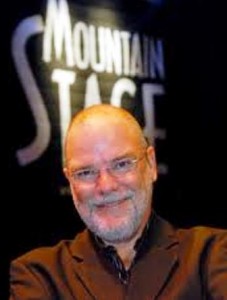 Linda Burton posting from Charleston, West Virginia – Larry Groce has been busy this month. On March 11 Larry and Charleston Mayor Danny Jones announced the lineup for this year’s FestivALL 2013; Larry has been Executive Director of the event since 2005. “This is a special year…as we celebrate 150 years as West Virginia; the state’s sesquicentennial on June 20 is followed by 10 days of our FestivALL,” he said. “We have been working closely with state leaders, the Sesquicentennial Commission, and entertainers with connections to West Virginia to make this year’s event a major celebration. It adds up to 10 days, 130 events and 350 performances.” That kind of planning would be enough to keep anyone head over heels, but that’s not all Larry has been doing. Larry is host and artistic director of Mountain Stage – Where Musicians Come To Play, a two-hour live
Linda Burton posting from Charleston, West Virginia – Larry Groce has been busy this month. On March 11 Larry and Charleston Mayor Danny Jones announced the lineup for this year’s FestivALL 2013; Larry has been Executive Director of the event since 2005. “This is a special year…as we celebrate 150 years as West Virginia; the state’s sesquicentennial on June 20 is followed by 10 days of our FestivALL,” he said. “We have been working closely with state leaders, the Sesquicentennial Commission, and entertainers with connections to West Virginia to make this year’s event a major celebration. It adds up to 10 days, 130 events and 350 performances.” That kind of planning would be enough to keep anyone head over heels, but that’s not all Larry has been doing. Larry is host and artistic director of Mountain Stage – Where Musicians Come To Play, a two-hour live 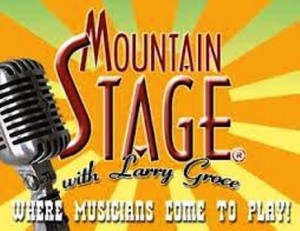 music program produced by West Virginia Public Radio and distributed nationally and internationally by NPR and Voice of America’s satellite radio service. And he’s been doing that for every broadcast since 1983, when he and Andy Ridenour co-founded the show. I’ve been following Mountain Stage for years; it’s recorded before a live audience at venues all over the world, but usually at the Culture Center Theater in downtown Charleston. And that’s where it was broadcasting tonight (how lucky am I?), but it was Rats! and Double Darn when the weatherman said SNOW was
music program produced by West Virginia Public Radio and distributed nationally and internationally by NPR and Voice of America’s satellite radio service. And he’s been doing that for every broadcast since 1983, when he and Andy Ridenour co-founded the show. I’ve been following Mountain Stage for years; it’s recorded before a live audience at venues all over the world, but usually at the Culture Center Theater in downtown Charleston. And that’s where it was broadcasting tonight (how lucky am I?), but it was Rats! and Double Darn when the weatherman said SNOW was 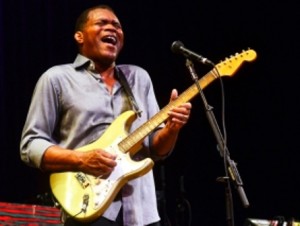 coming in; I was too chicken to venture out. Sadly (Rats!) I didn’t see Larry Groce and the Mountain Stage crew in action; but I consoled myself “with the radio on” all afternoon listening to the broadcast of last December’s show with Robert Cray; tonight’s show with Loudoun Wainwright III and Grammy-winner Paula Cole will be broadcast after May 24. » read more
coming in; I was too chicken to venture out. Sadly (Rats!) I didn’t see Larry Groce and the Mountain Stage crew in action; but I consoled myself “with the radio on” all afternoon listening to the broadcast of last December’s show with Robert Cray; tonight’s show with Loudoun Wainwright III and Grammy-winner Paula Cole will be broadcast after May 24. » read more
» posted on Saturday, March 23rd, 2013 by Linda Lou Burton
Almost Heaven
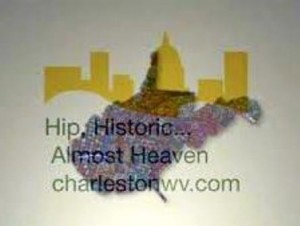 Linda Burton posting from Charleston, West Virginia – Looks like I’m stuck with that John Denver tune. “Almost Heaven” seems to be a popular phrase here in Charleston; it appears on mugs and tee-shirts and postcards; it’s used in business names for everything from auto repair to home inspection to hot dogs. Charleston is cozy; there’s just enough room at the bottom of the mountains for the Kanawha River, the Turnpike, and 51,400 people (2010 US Census). Plus all the amenities and necessities that make it a heavenly place to live. The sun was shining this morning; I headed out for my introductory overview drive. There’s the Kanawha River; the four-lane Boulevard let me drive alongside for block after block; there’s the capitol, right on the
Linda Burton posting from Charleston, West Virginia – Looks like I’m stuck with that John Denver tune. “Almost Heaven” seems to be a popular phrase here in Charleston; it appears on mugs and tee-shirts and postcards; it’s used in business names for everything from auto repair to home inspection to hot dogs. Charleston is cozy; there’s just enough room at the bottom of the mountains for the Kanawha River, the Turnpike, and 51,400 people (2010 US Census). Plus all the amenities and necessities that make it a heavenly place to live. The sun was shining this morning; I headed out for my introductory overview drive. There’s the Kanawha River; the four-lane Boulevard let me drive alongside for block after block; there’s the capitol, right on the 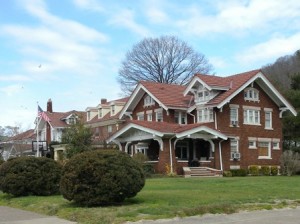 riverbank, with spacious grounds and a gleaming golden dome. I drove past beautiful historic homes facing the river, and attractions that begged me to come back; families were lined up outside the Clay Center, and traffic was brisk near the West Virginia State Museum. I stopped at First Watch, that “daytime café that’s open every day” for some chicken hash
riverbank, with spacious grounds and a gleaming golden dome. I drove past beautiful historic homes facing the river, and attractions that begged me to come back; families were lined up outside the Clay Center, and traffic was brisk near the West Virginia State Museum. I stopped at First Watch, that “daytime café that’s open every day” for some chicken hash 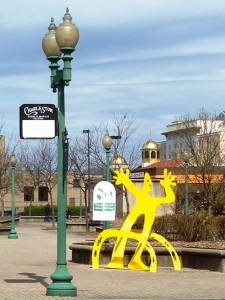 with zucchini and red peppers, and potatoes, of course; and studied the Visitors Guide with a pot of coffee at hand. A blue-eyed baby caught the corner of my eye; she seriously chewed on a piece of toast under the eyes of doting parents, out for their Almost Heaven Saturday. The Visitors Guide, hmm, where do I start? There’s a welcome from Mayor Danny Jones; he tells about the family-friendly city (yes!), the walkable community, the riverfront. There’s a welcome from the Charleston CVB, explaining the Guide; and there’s a list of Twelve Must Sees. So there’s the plan. » read more
with zucchini and red peppers, and potatoes, of course; and studied the Visitors Guide with a pot of coffee at hand. A blue-eyed baby caught the corner of my eye; she seriously chewed on a piece of toast under the eyes of doting parents, out for their Almost Heaven Saturday. The Visitors Guide, hmm, where do I start? There’s a welcome from Mayor Danny Jones; he tells about the family-friendly city (yes!), the walkable community, the riverfront. There’s a welcome from the Charleston CVB, explaining the Guide; and there’s a list of Twelve Must Sees. So there’s the plan. » read more
» posted on Friday, March 22nd, 2013 by Linda Lou Burton
Country Roads
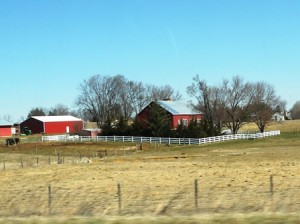 Linda Burton posting from Charleston, West Virginia – Remember those country roads John Denver sang about? Almost heaven, West Virginia, Blue Ridge Mountains, Shenandoah River…; it’s quite a catchy tune. I started humming this morning as soon as I spotted my first Blue Ridge Mountain on the way west from Richmond; I was in full chorus by the time I got to the Shenandoah Valley; surely the prettiest valley this side of any mountain. Red barns and black cows and rolling hills; the landscape is pleasing to the eye; bucolicly peaceful. I-64 joins I-81 south for a few miles; then it jags off west by itself again; an up and down ride getting steeper as I approached the West Virginia line. I stopped at the Welcome Center for maps and guidebooks; the wind was blowing strong and the temperature was mid-thirties; although the sun had melted the snow on the south side of the road. Country roads, take me home, to the place I belong, West Virginia, mountain momma, take me home country roads. I-64 joined
Linda Burton posting from Charleston, West Virginia – Remember those country roads John Denver sang about? Almost heaven, West Virginia, Blue Ridge Mountains, Shenandoah River…; it’s quite a catchy tune. I started humming this morning as soon as I spotted my first Blue Ridge Mountain on the way west from Richmond; I was in full chorus by the time I got to the Shenandoah Valley; surely the prettiest valley this side of any mountain. Red barns and black cows and rolling hills; the landscape is pleasing to the eye; bucolicly peaceful. I-64 joins I-81 south for a few miles; then it jags off west by itself again; an up and down ride getting steeper as I approached the West Virginia line. I stopped at the Welcome Center for maps and guidebooks; the wind was blowing strong and the temperature was mid-thirties; although the sun had melted the snow on the south side of the road. Country roads, take me home, to the place I belong, West Virginia, mountain momma, take me home country roads. I-64 joined 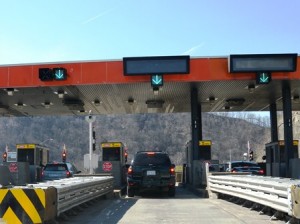 I-77 and took off to the north towards Charleston; then bam, there was a toll booth! A toll booth on an interstate? “Why do they call it a FREE way?” I asked the nice lady who took my $2.00 toll fee. “It’s privately owned,” was her answer. “We get no state or federal money.” She pointed to a web address on the side of the booth and told me to read all about it; after getting settled in my room, that’s what I did. And that’s where I learned about the West Virginia Turnpike. » read more
I-77 and took off to the north towards Charleston; then bam, there was a toll booth! A toll booth on an interstate? “Why do they call it a FREE way?” I asked the nice lady who took my $2.00 toll fee. “It’s privately owned,” was her answer. “We get no state or federal money.” She pointed to a web address on the side of the booth and told me to read all about it; after getting settled in my room, that’s what I did. And that’s where I learned about the West Virginia Turnpike. » read more
